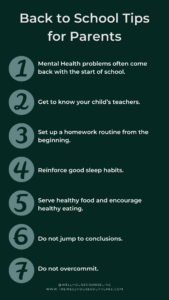Breathing Through Anxiety: Strategies to Calm Down When Anxious
Anxiety is something that most people will struggle with from time to time in varying degrees. Imagine with us for a moment. You are driving in your car when all of a sudden you are dizzy, your heart is racing, and you struggle to breathe. There is a thin layer of sticky sweat forming between your palms and the steering wheel. This may be the first time, but you are having a panic attack.
They can hit without much warning. If you are prepared with an understanding of what you are experiencing and different techniques to handle it, you can help yourself out of panic.
What is anxiety?
 Anxiety in small doses is a part of everyday life as humans. It was a part of our survival instinct that kept our ancestors alive. According to the American Psychological Association, anxiety is defined as “an emotion characterized by feelings of tension, worried thoughts and physical changes like increased blood pressure.” It is also usually accompanied by a physical response such as rapid heart rate, trembling, sweating, and dizziness.
Anxiety in small doses is a part of everyday life as humans. It was a part of our survival instinct that kept our ancestors alive. According to the American Psychological Association, anxiety is defined as “an emotion characterized by feelings of tension, worried thoughts and physical changes like increased blood pressure.” It is also usually accompanied by a physical response such as rapid heart rate, trembling, sweating, and dizziness.
Within the umbrella of anxiety there are typically six subcategories to better define how it affects your life: Generalised Anxiety Disorder (GAD), Social Anxiety, Specific Phobias, Panic Disorders, Obsessive Compulsive Disorder (OCD), and Post-traumatic Stress Disorder (PTSD).
Here are some of the symptoms of anxiety that you may experience when you are working through it:
- Feeling nervous, restless or tense
- Having a sense of impending danger, panic or doom
- Having an increased heart rate
- Breathing rapidly (hyperventilation)
- Sweating
- Trembling
- Feeling weak or tired
- Trouble concentrating or thinking about anything other than the present worry
- Having trouble sleeping
- Experiencing gastrointestinal (GI) problems
- Having difficulty controlling worry
- Having the urge to avoid things that trigger anxiety
Shallow breathing contributes to Anxiety
When people are anxious, they tend to take rapid, shallow breaths that come directly from the chest. This type of breathing, called thoracic or chest breathing, casus an upset in the oxygen and carbon dioxide levels in the body resulting in increased heart rate, dizziness, muscle tension, and other physical sensations. In other words, your blood is not being properly oxygenated and this may signal a stress response that contributes to anxiety and panic attacks. When you are anxious, you might not even notice that you are breathing this way.
Diaphragmatic or deep breathing, on the other hand, stimulates the parasympathetic nervous system, which is responsible for regulating the heartbeat, blood flow, breathing, and digestion. Deep breathing can help you avoid the “fight-or-flight” response to mentally or physically terrifying situations. When you breathe this way, you can feel your belly rise and fall with each breath.
Most people aren’t really conscious of the way they’re breathing, but generally, the easiest way to determine your breathing pattern is to put one hand on your stomach (near your waist) and the other in the middle of your chest. As you breathe, notice which hand raises the most.
If you are breathing properly, your stomach should rise and fall with each breath, and the hand resting on your stomach should rise and fall the most.
It’s important to be aware of your breath during stressful and anxious times. If you notice shallow breathing, simply consciously switching to deep breaths can help bring your body back into a calm state.
Breathing Techniques to help with Anxiety
Alternate Nostril Breathing
Alternate-nostril breathing involves blocking off one nostril at a time as you breathe through the other, alternating between nostrils in a regular pattern. When following the prompts below, you will use one finger to softly close one nostril at a time.
Close your eyes or softly gaze downward.
Inhale and exhale to begin.
Close off your right nostril with your finger.
Inhale through your left nostril.
Close off your left nostril with your finger.
Open and exhale through your right nostril.
Inhale through your right nostril.
Close off your right nostril with your finger.
Open and exhale through your left nostril.
Inhale through your left nostril.
Do your best to work up to 10 rounds of this breathing pattern. If you begin to feel lightheaded, take a break. Release both nostrils and breathe normally.
“When the mind is agitated, change the pattern of the breath”
Patanjali, Yoga Sutras
Belly Breathing
According to The American Institute of Stress, 20 to 30 minutes of belly breathing each day will reduce anxiety and stress.
Find a comfortable, quiet place to sit or lie down. You can try sitting in a chair, sitting cross-legged, or lying on your back with a small pillow under your head or knees.
Place one hand on your upper chest and the other hand on your belly, below the ribcage.
Allow your belly to relax, without forcing it inward by squeezing or clenching your muscles.
Breathe in slowly through your nose. The air should move into your nose and downward so that you feel your stomach rise with your other hand and fall inward (toward your spine).
Exhale slowly through slightly pursed lips. Take note of the hand on your chest, which should remain relatively still.
You can try this exercise as long as it feels comfortable. Benefits of belly breathing can be felt with as little as 5 minutes of daily breathwork practice.
Box Breathing
 Box breathing can also be called four-square breathing. This is a simple breathing practice that can feel comfortable and calming. Follow these simple directions:
Box breathing can also be called four-square breathing. This is a simple breathing practice that can feel comfortable and calming. Follow these simple directions:
Exhale to a count of four.
Hold your lungs empty for a four count.
Inhale to a count of four.
Hold air in your lungs for a count of four.
Exhale and begin the pattern anew.
4-7-8 Breathing
The 4-7-8 breathing exercise, also called the relaxing breath, acts as a natural tranquilizer for the nervous system. At first, it’s best to perform the exercise seated with your back straight. Once you become more familiar with the breathing exercise, however, you can perform it while lying in bed:
Place and keep the tip of your tongue against the ridge of tissue behind your upper front teeth for the duration of the exercise.
Completely exhale through your mouth, making a whoosh sound.
Close your mouth and inhale quietly through your nose to a mental count of four.
Hold your breath for a count of seven.
Exhale completely through your mouth, making a whoosh sound to a count of eight.
Resonance Breathing
Resonance breathing, or coherent breathing, can help you get into a relaxed state and reduce anxiety
Lie down and close your eyes.
Gently breathe in through your nose, mouth closed, for a count of six seconds. Don’t fill your lungs too full of air.
Exhale for six seconds, allowing your breath to leave your body slowly and gently without forcing it.
Continue for up to 10 minutes.
Take a few additional minutes to be still and focus on how your body feels.
Note: Sometimes people with a panic or anxiety disorder may feel increased anxiety or panic while practicing breathing exercises. This may be due to the increased focus on breathing. It is important to talk with a counselor about any challenges that come up when practicing breathwork. Often, the increase in anxiety or panic is temporary and due to the newness of the breathing technique.
When to seek out counseling for anxiety
Like we mentioned above, anxiety is a part of every person’s life. If you find that your anxiety is keeping you from certain activities, interfering with your work, or affecting your relationships; it is a good idea to seek out some help. Breathing techniques are an excellent starting point. If you are not seeing the improvement you might like or want extra tools for your belt to tackle your anxiety, we are here in Southlake, Texas to help with just that.
We offer counseling assistance to those looking to take back control of their lives and feel confident again. Anxiety does not have to control your life anymore! If you are located here in Texas, we offer in office services to those in the DFW area and telehealth options for those who cannot make it into the office. To schedule a consultation to see how we can address your anxiety concerns give a call, text us, or email us. We are here to help you live the life you always dreamed of.

 The biggest misconception about how to communicate in a relationship is that communication is the same as talking or making conversation. Communication in partnerships, at its core, is about connecting with your spouse to offer support and to understand their point of view. Below are some helpful tips for communicating with your partner.
The biggest misconception about how to communicate in a relationship is that communication is the same as talking or making conversation. Communication in partnerships, at its core, is about connecting with your spouse to offer support and to understand their point of view. Below are some helpful tips for communicating with your partner. It can be tough to hear criticism and not become defensive. It is helpful to remember that your partner is trying to communicate how your behavior is making them feel. Even if your partner isn’t using those words, try and pull out how they are feeling. When you can connect and talk about their experience, it will be easier to connect and find a mutual solution.
It can be tough to hear criticism and not become defensive. It is helpful to remember that your partner is trying to communicate how your behavior is making them feel. Even if your partner isn’t using those words, try and pull out how they are feeling. When you can connect and talk about their experience, it will be easier to connect and find a mutual solution. If your partner is not interested in learning how to improve their communication skills, that is okay. It does not mean that your relationship is doomed. Rather, you are just the first person to make the decision to improve aspects of the relationship. Since the goal of effective communication is mutual understanding, you can help make communication feel easier by practicing clear verbal and non-verbal skills and demonstrating good listening skills. By doing this, you will diffuse the situation and create a more harmonious atmosphere for communication to occur. Of course, boundaries and reciprocal attention are important in a partnership. It may be helpful to enlist the help of a counselor to ensure that you are not creating or maintaining unhealthy relationship patterns.
If your partner is not interested in learning how to improve their communication skills, that is okay. It does not mean that your relationship is doomed. Rather, you are just the first person to make the decision to improve aspects of the relationship. Since the goal of effective communication is mutual understanding, you can help make communication feel easier by practicing clear verbal and non-verbal skills and demonstrating good listening skills. By doing this, you will diffuse the situation and create a more harmonious atmosphere for communication to occur. Of course, boundaries and reciprocal attention are important in a partnership. It may be helpful to enlist the help of a counselor to ensure that you are not creating or maintaining unhealthy relationship patterns.


